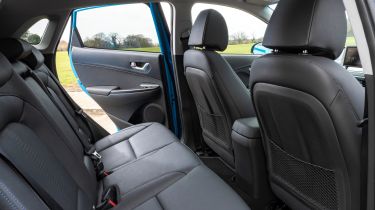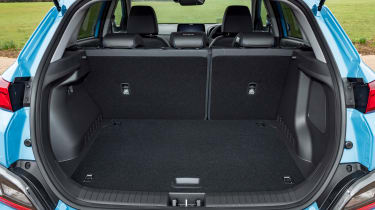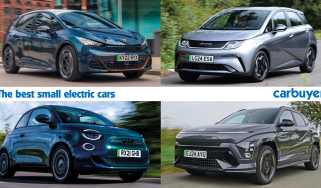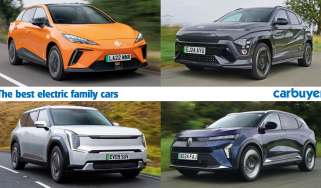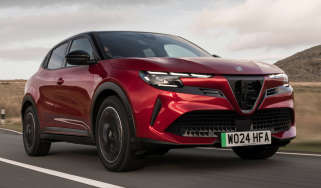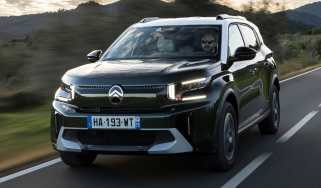Hyundai Kona Electric - Practicality & boot space (2019-2023)
The Kona Electric is no less accommodating than the petrol and diesel version, but it's not the most versatile SUV
A chunky SUV shape means the Kona doesn't compromise on interior space in the way that certain electric rivals do, but the Citroen C3 Aircross will better suit those more interested in interior room than zero-emissions motoring. Headroom is more generous than it appears from the outside, and those in the front will find it easy to get comfortable. Having fewer controls than a petrol or diesel car helps to create an airy, uncluttered feel inside, too.
Thanks in part to having been designed with electric power in mind from the outset, the Kona Electric has a flat boot floor with no noticeable steps or intrusions from the battery. There's 332 litres of load space with the rear seats in place, while folding them out of use increases this to 1,114 litres. Unfortunately, it's not possible to fold them completely flat, so sliding in heavy flat-pack furniture is likely to prove tricky.
With or without electric power, the Kona is far from the most versatile of SUVs you can buy, however – the Peugeot e-2008, SEAT Arona and C3 Aircross both offer more than 400 litres of boot space with the rear seats in place.
As with many electric cars, Hyundai doesn't recommend you use the Kona Electric as a tow car. If you need to tow a small trailer or caravan, the Kona Hybrid is able to haul a braked trailer weighing up to 1,300kg, so Hyundai sales staff are likely to usher you in its direction instead.
Which Is Best?
Cheapest
- Name160kW Advance 65kWh 5dr Auto
- Gearbox typeAuto
- RRP£34,990
Most Economical
- Name160kW Advance 65kWh 5dr Auto [Comfort Pack]
- Gearbox typeAuto
- RRP£35,590
Fastest
- Name160kW Advance 65kWh 5dr Auto
- Gearbox typeAuto
- RRP£34,990

